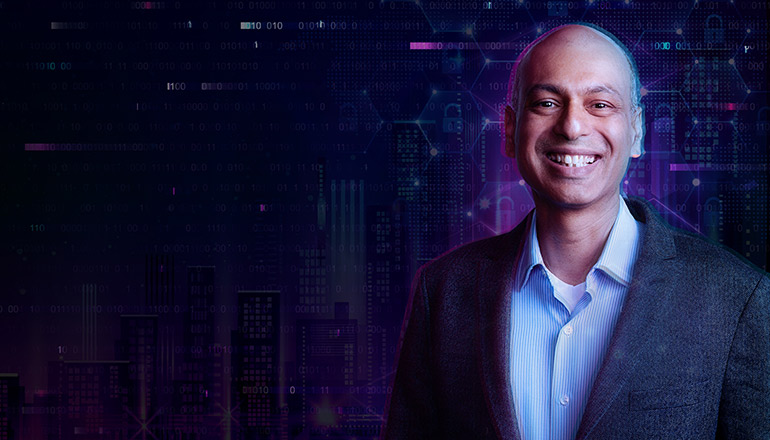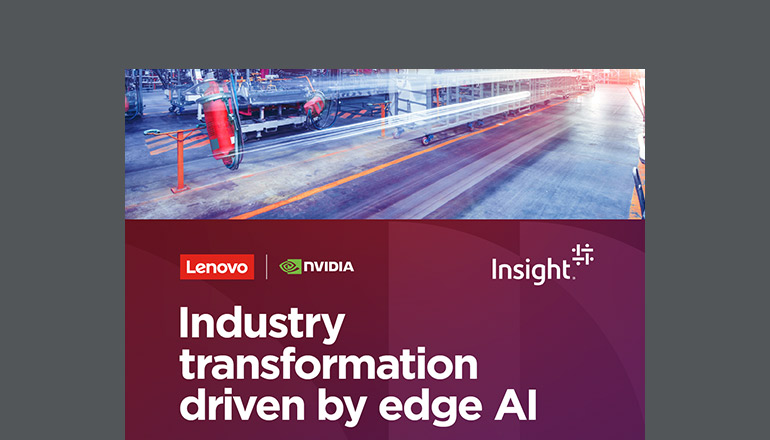Tech Journal Gaining an Edge: Why 2020 Is the Time for Edge Computing
By Ken Lamneck / 19 Mar 2020 / Topics: Intelligent edge

The Internet of Things (IoT) is booming. Connected devices and systems are growing. And data is exploding. Businesses are bloated with data — edge computing transforms data into action.
The edge of something great
From creation and collection to analysis and action, data is the lifeblood of society today. On a daily basis, individuals may use data to monitor their physical activity, track the delivery of an online order, check their insulin levels and so much more. Companies continue to find creative ways to apply data to improve products, deliver more superior customer experiences or improve operational efficiency. When data is so often the provider of the insights we seek, our want for faster, clearer and more accurate data intensifies.
5G may be the next hero to deliver on data demands, but the reality of widespread 5G access is still in the distant horizon. It will take a few years before 5G is somewhat ubiquitous. The good news? Organizations can begin to maximize benefits from data insights today, without 5G — and it all starts at the edge.
Edge computing pushes data processing to edge devices — meaning workloads are placed closer to the source of data collection where an action needs to take place. Essentially, edge enables real-time computing power.
The greatest example of edge computing we’re all familiar with is the autonomous vehicle. Logistically, you can’t operate an autonomous vehicle in a centralized manner. Studies have already shown that even with 5G, if data is navigating to a central location, the car will already have moved eight feet before it gets the data back. Obviously, a car can't move eight feet without knowing what's happening. So that data center needs to be in the trunk of the car, at the edge.
Why now?
When you look at the whole history of computing, data has gone through a tango of being centralized and decentralized. Computing began in a very centralized manner with mainframes. Then, the 1980s ushered in the era of the Personal Computer, or PC, which decentralized data with individual user computers and private hard drives. Fast forward to the late 1990s, early 2000s and we have our first examples of cloud computing — moving data back to a centralized state.
Now we’re at the edge, which brings us back full circle to decentralized data environments (although you'll see a combination of both centralized and decentralized for efficiencies).
While the use case of edge computing in autonomous vehicles may be audacious for small and midmarket businesses, this group should be excited about and begin exploring edge applications in their own space. Whereas other hot technologies such as virtual reality may feel out of reach, edge computing is not only attainable — it can provide tremendous Returns on Investment (ROI).
In fact, it’s the affordability and ROI of edge computing that will help drive widespread adoption in 2020. The cost of computing, and more importantly, the expenses tied to bandwidth and making something intelligent have all been lowering dramatically. These sharp drops in expenditures are enabling the whole underlying cost structure of IT. It's becoming increasingly cost effective to do things at the edge, at a very local level.
Edge computing can also reduce IT costs by keeping cloud storage under control. Sending everything to the cloud is too expensive (not to mention overwhelming). When you analyze and assess what has to happen at the edge, you send (and store) only necessary data to the cloud or to your private cloud — all other extraneous data is immediately discarded.
Practical applications for business
Edge computing enables us to bring intelligence to everything. The edge is where things are happening — it’s just a matter of putting it to work.
As an example, consider the restaurant industry. For most food retailers, technology is used in a credit card and point-of-sale system, maybe a security system, and that’s about where technology and data use ends. But some restaurant chains are beginning to realize the incredible ROI to be gained by bringing technology to the edge.
At Insight, we’re working with restaurants to integrate an Internet of Things (IoT) platform comprised of sensors in their refrigeration units and ovens. In the restaurant industry, food safety is more than a cost — it’s also a huge reputational risk. Outbreaks of illnesses destroy trust in a brand overnight, and that can take years to recover from. With data collection and processing happening at the edge, sensors can send alerts to a mobile device the moment an issue occurs, such as an increase in refrigeration temperature. This gives staff the knowledge and time to react before food safety is at risk.
Sensors used in edge computing have virtually limitless use cases, and the applications aren’t limited to in-house solutions. We work with an HVAC company to install sensors that benefit its customers. The HVAC systems are installed on rooftops (not the easiest location to get to when you suspect something is wrong). By installing sensors on the units where they can be analyzed at the edge — where the unit is — we’ve helped the company create a predictive maintenance system that helps both the business and its customers. If a sensor detects faults, such as a part falling out of alignment or a fan needing to be replaced soon, notifications are sent to the customer, the owner of the unit. As a result, alerted customers can proactively schedule maintenance before the unit fails.
Where to go from here
2020 is the year to use the edge to gain an edge. It’s time to start examining your business to undercover where you can bring intelligence — where do you have data that isn’t being analyzed or utilized? Does that data create opportunity, such a new service? With its ability to create substantial ROI, coupled with lowering cost curves, edge computing will be a game changer for businesses in 2020.
Where can the edge take you? No matter your industry, we can help you harness edge computing to move business forward. Let’s go.














